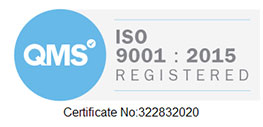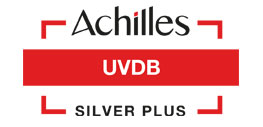Power system HV earthing design and earthing studies are one of the most deceptively complicated areas in electrical engineering, and are frequently misunderstood, or poorly designed. A correctly functioning earthing system is essential for safe operation of the system and protecting personnel and livestock against electric shock. At Aurora we have experience of working to BS EN 50522, ENA 41-24, ENA S34 and IEEE-80.
Aurora is also one of the few companies in the UK to possess the industry standard CDEGS grounding software package and have the knowledge to use it, with our Director being a Certified Level 1 user (one of only 21 engineers within the UK). This powerful package allows us to carry out sophisticated grounding design for larger sites and meet the stringent requirements of utility companies. As well as using CDEGS, we have recently invested in XGSLab, which brings a new and exciting dimension to earthing studies, through a much more flexible and advanced user interface for carrying out earthing studies.
Some of the more common earthing activity types are detailed below:
An Earth Potential Rise (EPR) Calculation, (also known as Rise of Earth Potential ROEP) and the associated touch and step voltage calculations are of key importance to ensure site safety of an earthing grid. We have frequently encountered engineers who believe that if they have a ‘good’ earth impedance of a few ohms, then their system is safe – which couldn’t be further from the truth. Power system earthing is a complex, iterative design process which needs to determine the soil resistivity, DNO fault levels and then the associated EPR and touch and step voltages. If these values are too high then there is a very real safety risk to personnel both in the substation and nearby, as well as any nearby livestock.
Aurora uses the industry standard CDEGS or XGSLab package for undertaking earthing designs, which allows us to build complex layer soil models with special backfills, calculate complex fault current distribution and build detailed models of the earthing system and nearby underground features (such as pipes, other structures, etc.) to produce 3D graphical representations of the touch and step voltages.
Aurora can undertake a complete earthing design for any power system, with the aim of ensuring that all items of equipment are correctly earthed with the right sized conductor and optimise the earth nest layout to suit the site conditions and reduce costs. Aurora has detailed knowledge of all aspects of power system earthing design and can provide guidance on optimising earthing layouts to help reduce costs and ensure that all equipment, personnel and livestock is fully protected.
Aurora can undertake a complete earthing survey for any power system, with the aim of checking and investigating to ensure that the earthing system is adequately sized and rated for the required duty, and that all conductors, joints and rods are performing as required. The surveys are usually carried out through a mixture of visual identification, micro-ohmmeter testing of joints and conductors and use of an earth clamp meter to test individual rods. In addition sometimes it is also beneficial to carry out soil resistivity surveys and/or fall of potential tests.
Carrying out a soil resistivity survey, is the first step to undertaking an earthing design. At Aurora we have the industry leading Megger Det 2/2 earth tester which we use for all soil resistivity surveys. Surveys are typically carried using the Wenner 4-pin method at 2 to 3 different locations, using spacings in accordance with BS EN 50522, to give a complete indication of the soil configuration, which can then be entered into CDEGS or XGSLab. Depending on the site location, Aurora will either carry out this test ourselves, or subcontract it to a local company, to help keep the overall costs down.
Once an earthing system has been installed, it is usually necessary to validate that the overall earth grid impedance matches the figure calculated in the CDEGS or XGSLab model. There are various test methods available for carrying out this test, but the preferred method for most sites is known as the Fall Of Potential method. At Aurora we use the Megger Det 2/2 to obtain a series of readings at a suitable distance from the site, until a stable value is confirmed for the site overall earth grid impedance. As with the soil resistivity survey, depending on the site location, Aurora will either carry out this test ourselves, or subcontract it to a local company, to help keep the overall costs down.
Aurora can provide detailed advice on how a power systems neutrals should be connected to earth at each voltage level, as this is of fundamental importance in ensuring the systems performance and safety. This includes, resistance earthing, reactance earthing, zig-zag grounding transformers, Petersen coils and even operating unearthed. Where appropriate Aurora will also help in selecting the appropriate values for any neutral earthing resistors and reactors.

Aurora Power Consulting are a leading independent power systems consultancy. We provide specialist power systems analysis services using software such as DIgSILENT, ETAP, PSCAD, EMTP-ATP, CDEGS and XGSLab.

